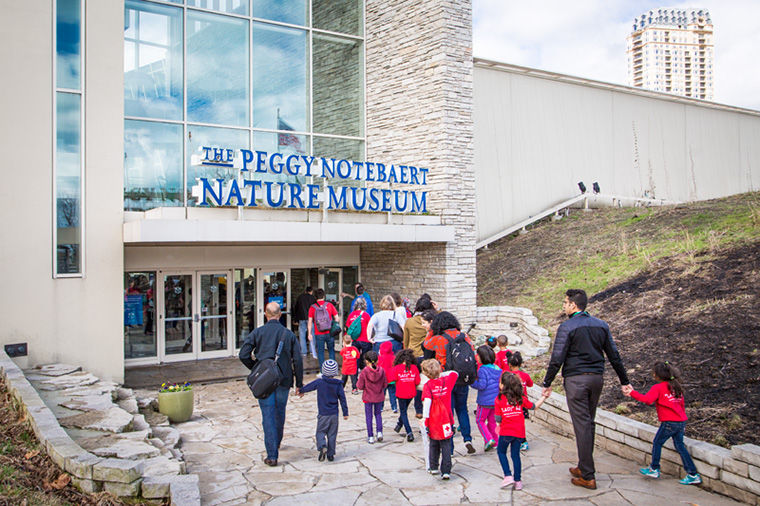Interactive exhibit demystifies climate change for all ages
April 4, 2016
Thunderstorms, floods and heat waves have influenced the changing weather and wardrobe for decades but are now more unpredictable due to global warming.
A new climate change exhibit opened April 2 at the Peggy Notebaert Nature Museum, 2430 N. Cannon Drive, and proved climate change needs to be looked at critically and not through a political lens as it has been seen, said Steve Sullivan, curator of urban ecology at the Chicago Academy of Sciences and the Peggy Notebaert Nature Museum.
Sullivan said the exhibit, titled “Weather to Climate: Our Changing World,” explains difficult-to-understand facts about climate change to people of all ages.
The exhibit has interactive features such as weather simulators where people can combine weather components and see how each contributes to different weather conditions such as thunderstorms, floods and tornadoes.
The display will also let people be meteorologists in the climate studio and read weather changes, create animals designed for the changing climate and look at specimens from the Chicago Academy of Sciences of some animals that will likely experience a change in population depending on their changing habitat.
“[Kids] are going to be learning in active and passive ways,” Sullivan said. “The green screen interactive—[kids will be] reading karaoke-like script at the bottom helps them understands some of these weather issues. Everybody is going to be learning together.”
Sullivan said a big part of the exhibit is explaining to the public the difference between climate and weather, which is something most people tend not to understand, he said.
“Weather is like what you are wearing,” he said. “But climate is like your wardrobe.”
He said weather connects to the overall pattern of climate over time and the trends that need to be looked at in response to the changing temperatures.
Some of these trends predicted by global warming include rising ocean temperatures, melting ice caps and irregular rain patterns, which in turn cause development replacement costs, agriculture disruptions and human migration, according to David Dolak, a senior lecturer in the Science & Mathematics Department who teaches “Environmental Science.”
“90 percent of the world’s fresh water is in the [Greenlandic] and Antarctic ice caps, and if they start to melt—which they are [doing]—that will start raising the water level a lot more,” Dolak said.
Dolak, who is a former environmental scientist at Argonne National Laboratory, which focuses on finding clean energy and environmental solutions, said these trends pose huge threats to younger generations and will result in drastic lifestyle changes.
Young adults and college students, especially, need to be aware of ways to combat climate change, said Michelle Yates, an assistant professor in the Humanities, History & Social Sciences Department. Yates teaches “Nature and Environmentalism in U.S. Culture” and said climate change is an issue the younger generation needs to face.
“We can combat climate change by participating in collective action like the People’s Climate March in 2014,” Yates said.
She said collective action has proved to be effective since the ‘70s, when environmental movements created needed dialogue.
Yates said given Columbia’s investment in creative industries, combining art with social change can create a communal transformation about what is important to discuss for the younger generation.
“Art [is] a way of bringing people together and generating collective action,” Yates said.








